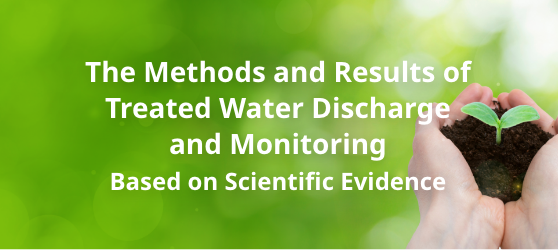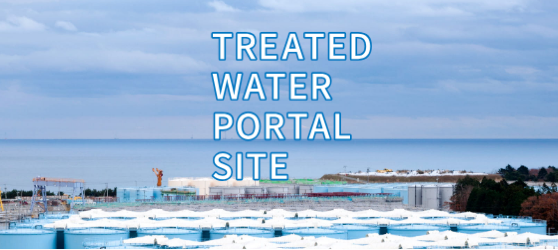Reduction of Environmental Impact
Management Approach <GRI306-1, 306-2>
The TEPCO Group conserves the local environment by conducting management based on the following four approaches : (1) recognition and evaluation of environmental impact (environmental assessments), (2) management of polluting substances, (3) reduction of polluting substance emissions volume, and (4) risk management. A summary of detailed initiatives is as follows.
Environmental Assessment
When conducting development projects, from the planning phase, we conduct environmental impact assessments as mandated by law to reduce environmental impact as much as possible.
Air Pollution and Water Contamination Prevention
We take continuous measurements and conduct sampling to monitor emissions released into the air and public water area from TEPCO power plant facilities and confirm that emissions are compliant with mandated environmental standards. To reduce emissions of polluting substances, we implement countermeasures concerning fuel, facilities, and operations management.
Waste Management
The TEPCO group promotes waste management, including management of PCB Waste products, to reduce the environmental impact accompany with by our business activities. The Federation of Electric Power Companies has established the goal of striving for an approximately 95% recycling rate for waste by FY2020. The TEPCO Group is contributing to this initiative by promoting the recycling of industrial waste products. For PCB Waste, we conduct appropriate storage and management in accordance with relevant laws. We transferred control of operations related to the cleaning, treatment, and recycling of low-level contaminated PCB equipment to our wholly-owned subsidiary Tokyo Power Technology Inc. to promote planned detoxification and treatment.
Chemical Substance Management
Through our environmental management system, we ascertain emissions volumes, consumption volumes, and retention volumes for PCB (polychlorinated biphenyl) waste, toxic substances subject to the PRTR Act, ozone depleting substances, and asbestos. Substances subject to management are managed appropriately in accordance with applicable laws and we work towards emissions reduction by promoting switching to products not containing applicable substances.
Risk Management
We conduct risk management for soil and water pollution due to toxic substance leaks by regularly inspecting storage tanks, installing breakwaters and leak-off barriers, and preparing neutralizing agents, to prevent pollution damage. We also maintain records of products in use that contain polluting substances to ensure appropriate treatment during disposal and replacement. To address radioactive pollution incidental to the Fukushima Daiichi Nuclear Power Plant, in addition to cooperating with the government to conduct cleansing and prevent contamination to groundwater that flows below the grounds of the power plant, we also are implementing various measures to prevent polluted water from flowing into the ocean.
Water
Water Withdrawal by Source <GRI 303-3>
| Unit | FY2018 | FY2019 | FY2020 | FY2021 | |
|---|---|---|---|---|---|
| Total withdrawal from scarce sources | kilo m3 | 49,135,474 | 46,015,293 | 47,420,172 | 49,463,282 |
| - Surface water (wetlands, lakes, rivers) | kilo m3 | 49,133,813 | 46,014,462 | 47,419,391 | 49,462,537 |
| - Ground water (from wells) | kilo m3 | 39 | 42 | 25 | 27 |
| - Water from municipal water supplies | kilo m3 | 1,622 | 789 | 756 | 719 |
| Water withdrawal in “water stressed” areas | kilo m3 | 0 | 0 | 0 | 0 |
Water Discharge and Consumption <GRI 303-4, 303-5>
| Unit | FY2018 | FY2019 | FY2020 | FY2021 | |
|---|---|---|---|---|---|
| Total water discharge | kilo m3 | 49,125,535 | 46,015,290 | 47,420,170 | 49,463,282 |
| Total freshwater consumption | kilo m3 | 9,939 | 3 | 2 | <1 |
Water Sources Significantly Affected by Withdrawal of Water <GRI 303-1>
At hydroelectric power plants, river water is used for power generation and properly managed based on the "River Maintenance Flow Guidelines". All of the river water used for power generation is discharged into the river, and there is no consumption in this process, so there is no water source that is significantly affected by water intake. For confirming water stress, WRI Aqueduct widely used as a water risk assessment method is adopted. According to the evaluation by Aqueduct, the hydroelectric power generation area is evaluated as Medium-high at the maximum, we judge that there is no power plants located in water stressed area and there is no water intake from the drought area.
TEPCO Illustrated
Water Bodies and Ecosystems Affected by Water Discharges and/or Runoff <GRI 303-2>
Waster from power plants, etc. is treated appropriately at TEPCO treatment plants in accordance with relevant laws. We also confirm that the water has no environmental impact prior to draining. Contaminated water produced at the Fukushima No. 1 Nuclear Power Plant is being treated appropriately and stored in tanks in the facility area. As there is no flow or drainage to external sources, there are no water basins or related ecosystems impacted by wastewater from power plants, etc.
Furthermore, at certain hydropower plants, water used is flowed into a separate water system but hydropower plant operations are managed in accordance with the Guidelines for River Water Level Maintenance, and the impact of water use by power plants on river basins is limited.
Emissions of Ozone Depleting Substance (ODS)
Ozone Depleting Substance (ODS) Production, Imports, and Exports Volumes <GRI 305-6>
The TEPCO Group does not produce, import, or export ozone depleting substances (ODS).
| FY2018 | FY2019 | FY2020 | FY2021 | |
|---|---|---|---|---|
| Production / imort / export volume (t) | 0 | 0 | 0 | 0 |
- *
Emission intensity used for calculations: N/A
- *
Standards, methods, prerequisites, calculation tools used: N/A
Other Atmospheric Emissions
NOx SOx Emissions <GRI 305-7>
| Unit | FY2018 | FY2019 | FY2020 | FY2021 | |
|---|---|---|---|---|---|
| NOx | kt | 18 | 2 | 2 | 2 |
| SOx | kt | 6 | 0.1 | 0.1 | 0.2 |
TEPCO Illustrated
Raw Materials
The TEPCO Group's main product is electricity, and fuel for power generation is a raw material. Respective consumption volumes are as follows.
Fuel Consumption <GRI 301-1>
| Unit | FY2018 | FY2019 | FY2020 | FY2021 | |
|---|---|---|---|---|---|
| Coal | kt | 8,145 | <1 | <1 | <1 |
| Heavy oil, crude oil, etc. | ML | 558 | 44 | 44 | 43 |
| Gas (LNG, LPG) | kt | 20,785 | <1 | <1 | <1 |
| City gas | mil m3 | 2,090 | <1 | <1 | <1 |
| Fuel for nuclear power plants | t | 0 | 0 | 0 | 0 |
| Biomass | kt | 200 | 0 | 0 | 0 |
Waste by Type and Disposal Method <GRI 306-2>
We promote industrial waste recycling to reduce environment impact accompanying with our business activities as much as possible.
TEPCO Illustrated
Significant Spills
| FY2018 | FY2019 | FY2020 | FY2021 | |
|---|---|---|---|---|
| No. | 0 | 0 | 0 | 0 |
In the event of a significant spill accident, we respond promptly and appropriately in accordance with relevant laws and regulations.
Hazardous Waste
- Japan is a signatory of the Stockholm Convention and the Minamata Convention. We manage PCBs and mercury-contaminated waste appropriately and in accordance with relevant laws based on these conventions. We also work to ascertain the status of use of asbestos and conduct management in accordance with relevant laws and regulations.
- There was no importing or exporting of hazardous waste.
- PCBs and asbestos are transported for processing.
Treatment of Hazardous Waste
PCB Waste
| Unit | FY2018 | FY2019 | FY2020 | FY2021 | |
|---|---|---|---|---|---|
| Waste volume containing PCB | kt | 27 | 25 | 26 | 27 |
| - Insulating oil (inadvertently contaminated) | ML | 4 | 4 | 4 | 4 |
| - Pole-mounted transformers | 10k units | 8 | 9 | 7 | 5 |
| - High-voltage transformers and capacitors (high contaminated) | Unit | 116 | 121 | 3 | 24 |
















